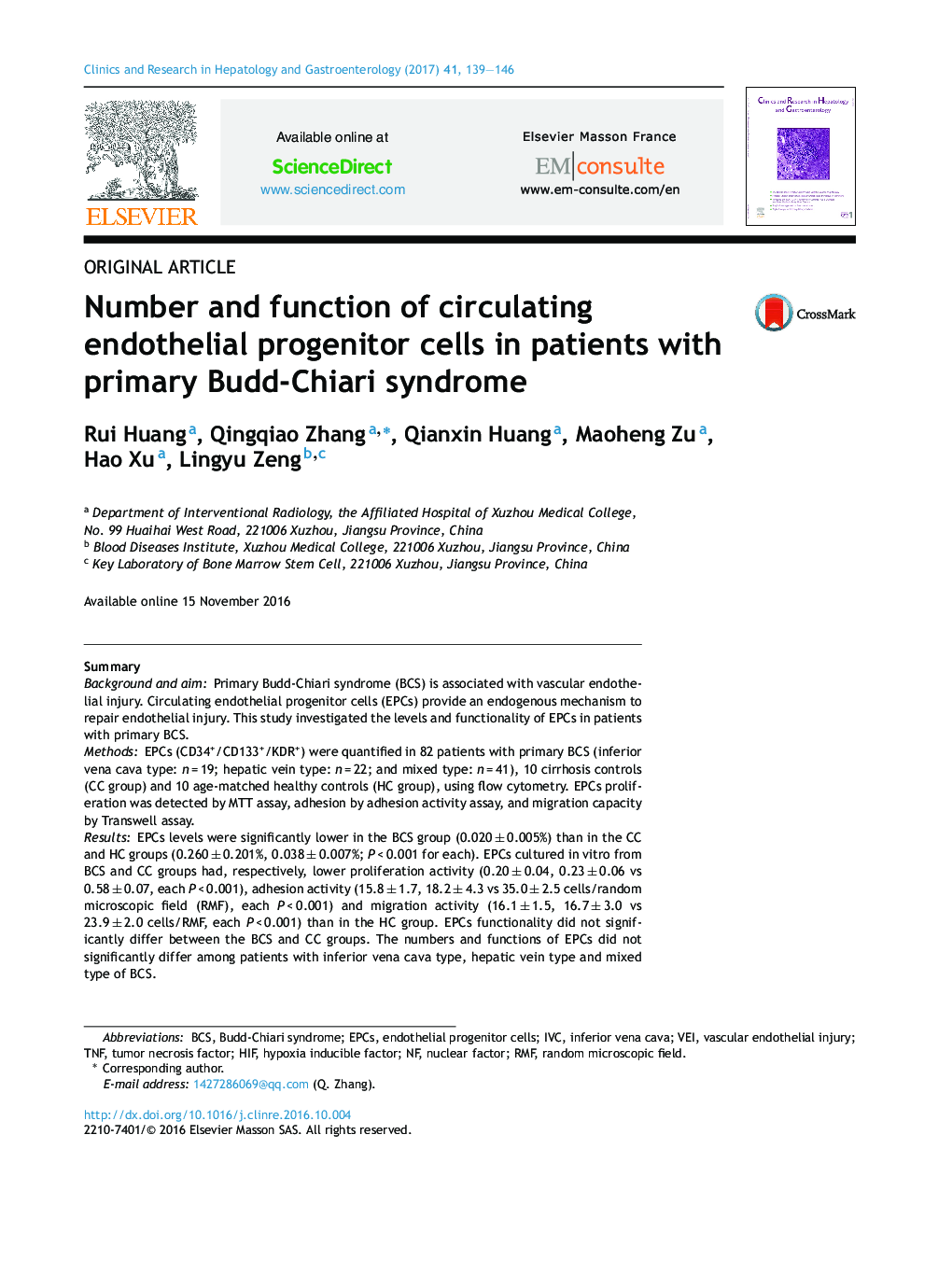| Article ID | Journal | Published Year | Pages | File Type |
|---|---|---|---|---|
| 5657787 | Clinics and Research in Hepatology and Gastroenterology | 2017 | 8 Pages |
SummaryBackground and aimPrimary Budd-Chiari syndrome (BCS) is associated with vascular endothelial injury. Circulating endothelial progenitor cells (EPCs) provide an endogenous mechanism to repair endothelial injury. This study investigated the levels and functionality of EPCs in patients with primary BCS.MethodsEPCs (CD34+/CD133+/KDR+) were quantified in 82 patients with primary BCS (inferior vena cava type: n = 19; hepatic vein type: n = 22; and mixed type: n = 41), 10 cirrhosis controls (CC group) and 10 age-matched healthy controls (HC group), using flow cytometry. EPCs proliferation was detected by MTT assay, adhesion by adhesion activity assay, and migration capacity by Transwell assay.ResultsEPCs levels were significantly lower in the BCS group (0.020 ± 0.005%) than in the CC and HC groups (0.260 ± 0.201%, 0.038 ± 0.007%; P < 0.001 for each). EPCs cultured in vitro from BCS and CC groups had, respectively, lower proliferation activity (0.20 ± 0.04, 0.23 ± 0.06 vs 0.58 ± 0.07, each P < 0.001), adhesion activity (15.8 ± 1.7, 18.2 ± 4.3 vs 35.0 ± 2.5 cells/random microscopic field (RMF), each P < 0.001) and migration activity (16.1 ± 1.5, 16.7 ± 3.0 vs 23.9 ± 2.0 cells/RMF, each P < 0.001) than in the HC group. EPCs functionality did not significantly differ between the BCS and CC groups. The numbers and functions of EPCs did not significantly differ among patients with inferior vena cava type, hepatic vein type and mixed type of BCS.ConclusionPatients with primary BCS had lower EPCs levels, with less proliferation, adhesion and migration activities. These findings suggest that lower levels of less functional EPCs may be associated with venous occlusion in primary BCS patients.
